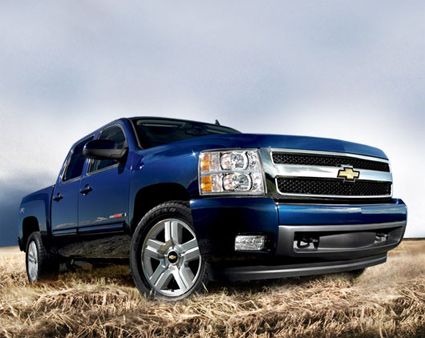General Motors announced Monday that it is slashing production at its plants producing pick-ups and full size SUVs. A full shift will be eliminated at the Janesville, Wisconsin SUV production facility, and at the plants producing the full-size pick-ups: Pontiac and Flint, Michigan, and Oshawa, Ontario. According to GM, the decision is a reflection of decreased demand for the vehicles.
This will eliminate 88,000 pick-ups and 50,000 full size SUVs from the planned annual production of these vehicles.
The vehicle lines affected are the Chevy Tahoe and Suburban, GMC Yukon and Yukon XL, Chevy Silverado and GMC Sierra and the heavy duty versions of both. Despite the cutbacks, GM still has 63% of the market in full-size SUVs and approximately 40 percent of the full-size pickup truck market.
(more after the jump)
General Motors North America president Troy Clarke attributed the cutbacks to rising fuel prices and a “softening economy.” “With rising fuel prices, a softening economy, and a downward trend on current and future market demand for full-size trucks, a significant adjustment was needed to align our production with market realities.” he said. “This is a difficult move, but we remain committed to retaining and growing our leadership position in the full-size truck market.”
Clarke also noted that GM is seeing strong sales of its new car lines, particularly the Cadillac CTS and Chevrolet Malibu, and its new crossover lines, including the Buick Enclave and GMC Acadia. The company is exploring alternatives for expanding auto production, but nothing has currently been announced.
General Motors has systematically resisted, to the extent possible, becoming involved in a rebate war in the pick-up market. Toyota triggered rebates when it began offering $2,000 cash back on Tundras after the newly introduced model faltered. Dodge has been the rebate king, as it sought last year to do almost anything to sell its Ram, at the time the oldest pick-up on the market. However, both Ford and Dodge are introducing all new pickups this fall, both having introduced the new models at the Detroit Auto Show this past February.
The light truck and SUV market is one that is confounding the domestic automakers, and for good reason. The market is enormous, even at its currently reduced sales levels. So, none of the automakers dares run the risk of losing market share. In turn, that translates into having to make the huge investment necessary to develop and introduce new models. But reduced sales levels mean that the costs of new products cannot be as easily amortized over a production run and the increased competition for the lower number of sales simultaneously puts downward pressure on pricing.
GM’s production cutbacks are likely aimed, at least in part, at promoting price stability in the pick-up truck lines, so that it does not become necessary for the company to use huge rebates to sell them. GM will face its largest test in this market in several years when the new Ford and Dodge competitors become available in dealer showrooms later this year.
If GM can maintain its market share, even though it will then have the oldest design pick-up truck on the market, it will be a coup for the company, and a blow to both Ford and Chrysler. The decision to drop entire shifts at these plants is clearly designed to eliminate the risk of overstocked inventory and excessive production that would put the company under pressure to increase rebates.

